how to draw 3d alphabet with shadow
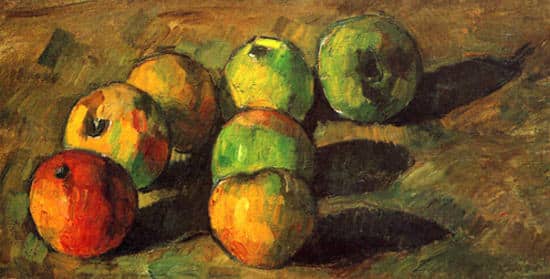
Cezanne, Oil on Sail, still life with seven apples, 1878
Ever felt frustrated having worked and then hard on a drawing – just to find it notwithstanding looks 'flat'?
Is information technology the proportions? The perspective? Perchance the composition?
Whilst these all play an integral function, the most effective method of making your drawings announced three dimensional, is understanding how low-cal logic works.
If line cartoon creates the proportions, handling of tone creates the grade.
The theory seems elementary and the changes in technique small, just applying the principles of how tone, light and shade work, volition improve the illusion of form in every cartoon yous practise – regardless of the subject.
And the exciting part about it is, once you 'get' lighting, the principles never modify.
In Office i of this 3 Part series (Part two – Drawing shading demonstration) we look at the theory, the drawing and then pigment a simple class focusing on shadow, light and edges.
You might notice information technology isn't your drawing technique that'south wrong, but your lighting…
How does light bear when it hits a class?
Predictably.
If we're using one single light source.
The trouble is most of the fourth dimension at domicile, you don't take one single light source, you have a comfortable chair, a loving cup of tea and 10 minutes to sketch your dog. There'due south multiple lights coming from above, window lights and maybe lights from a t.v or reading light.
Merely by the nature of the lighting setup nosotros accept in our homes, information technology makes it really hard to achieve a dramatic drawing successfully.
To brand something await 3 dimensional, yous demand the low-cal to practice the work for you lot – rather than your pencil.
At present I'm the outset 1 to be fatigued to my sketchpad whilst enjoying a brew in my lounge, but note the give-and-take 'sketch'.
Sketching really helps yous to keep your eye adept and your creativity flowing and I practice it every day.
Just when I desire to piece of work up one of my sketches into a more developed drawing, I would accept a more conscious approach to the lighting setup, composition and design of the piece.
Creating the illusion of form using multiple light sources is hard considering the effect of the low-cal falling on an object is more dislocated, softer and introduces new shapes that don't carry consistently with the object we're looking at.
So I've constitute the easiest way to learn most light and shadow is by using one difficult, single light. It could be the sun, a light through a window or an artificial lite.
A hard light conspicuously demonstrates each distinct expanse to be aware of, exaggerating the widest tonal range and when you're a beginner it'southward the simplest way to run into the difference betwixt the tones.
So for this three Part Series, we'll be looking at single lighting set up ups demonstrating the theory of form on a sphere.
Learning simple form principles volition enable you to meet the central shapes of which all of nature is comprised. The cone, the cube, the cylinder and the sphere.
The principles we'll look at on the sphere, can be practical to the curve of a cheek, the fullness of a teapot or vase and I'll be putting them into exercise on a drawing of an apple side by side week.
Light Logic Using a Unmarried Light Source
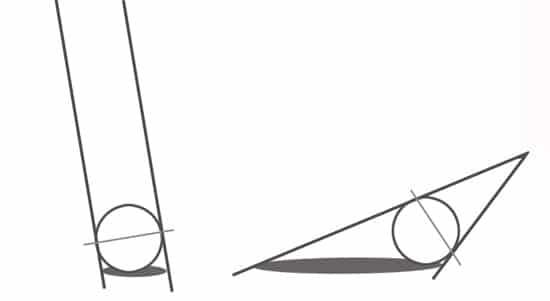
Light ever travels in a straight line.
The shadows that are fabricated by the light are always in a direct response to whatsoever the calorie-free hits, any angle the light is coming from and the intensity of the light source.
And then if vivid, high sunshine hits a tree directly from above, information technology makes a curt shadow shape, that doesn't necessarily help you as an artist to describe the field of study.
Later in the day when the sunday is very depression, it volition make a longer more interesting shadow shape, usually more than representative of the essence of the tree and the presence of light.
If a single light hits a cube, it will make a square shape – if a single lite hits a sphere, an ellipse shape.
This is called 'light logic' and the shadow produced is called a Cast Shadow.
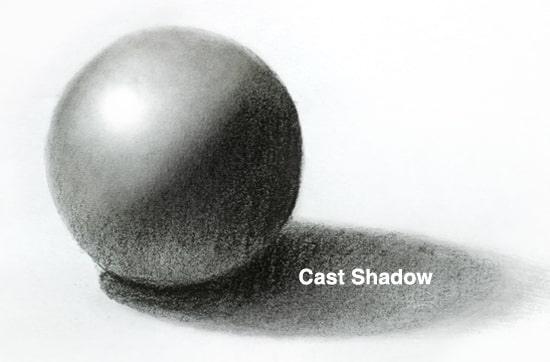
Cast Shadow
The characteristics of the cast shadow are dependent on the intensity of the light source. A hard light will produce a cast shadow with a sharp edge, a soft lite will produce a cast shadow with a more blurry edge.
The longer the cast shadow is from the object, the softer the edge of the shadow becomes. Observe how the cast shadow is darkest right underneath the sphere and and so it gets lighter and lighter as information technology goes out farther away from the low-cal source.
Also a cast shadow behaves predictability when on a flat surface, but when there are other levels or surfaces in the shadows path, the shape can be altered depending on the surface over which it falls.
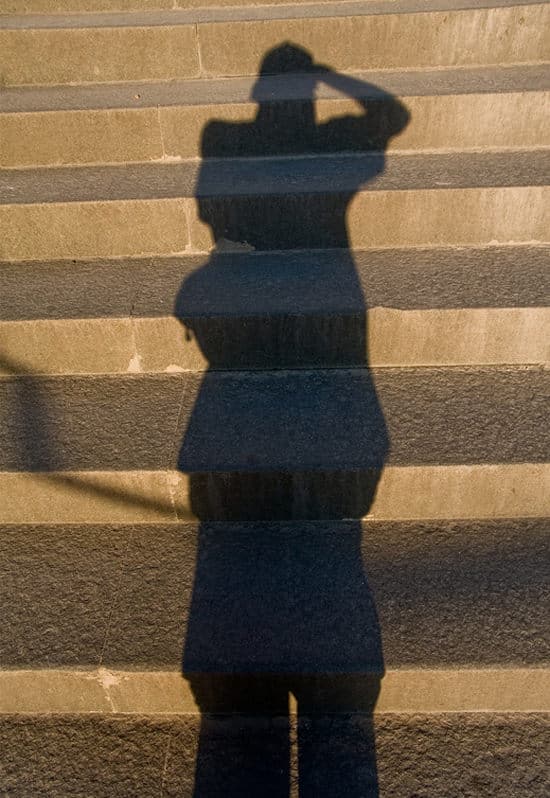
This is i of the kickoff things to check on your drawings and paintings. Do the shadow shapes logically sit down with the subject and the lighting?
It's all about being enlightened of where the calorie-free is coming from and is it consequent with your motion-picture show.
Once you empathize the basics of how light behaves, it is quite encouraging to think that a small corporeality of information can give you lot the knowledge needed to convincingly portray the illusion of form with any bailiwick.
The iii areas of a form:
When you're showtime starting you only need to think of the three simple areas of the grade:
one. Light side – This includes the Highlight and the Halftones.
The Highlight is the lightest part where the light directly hits the object.
The Halftones are always going to be lighter than whatsoever value on the shadow side and blend into the shadow side (sometimes they can exist split into light one-half tones and dark half tones)
2. Shadow side – This includes the Form Shadow, the Form Shadow Core and Reflected light.
The Form Shadow Core is the darkest part of the shadow, the balance of the Form Shadow is made upwardly of dark tones that blend away from the cadre shadow into the reflected light, if at that place is any.
Reflected calorie-free is the light reflected onto the subject, from the surface it sits on or ambient low-cal around the object.
3. Bandage shadow – This has 3 parts.
The darkest part that sits straight nether the object, the mid tone that makes upwards the majority of the cast shadow shape and the lightest, softest tail of the cast shadow
Creating the shadow line
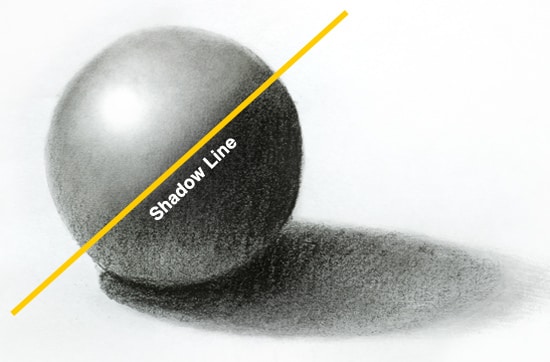
The shadow line is the transition betwixt the light side and the shadow side.
This can have many names, bed-bug line, shadow line, terminator, form shadow line to name a few. The main matter to retrieve is to continue each area clearly defined.
Keeping your low-cal tones in the light side and your darks in the shadows whilst maintaining a soft transition between the two is what we're trying to attain.
This seems obvious only making the smooth transition between the lights and the darks is no mean feat every bit the shadow line actually falls over quite a small area and non forgetting probably the nigh tricky thing – retaining the fullness of the globe shape.
What can happen is y'all gently lighten your pencil marks and endeavour to build up a nice alloy.
The problem is the darker side spreads, it creeps, you work harder and harder, y'all then think your eraser will fix it.
Information technology didn't.
Now the darks have a too severe edge and you've started to lose the lovely shape you first had. Your shadow line has gone North, your low-cal logic has now become illogical and your lite side has become darker with all that flurry of blending!
It is tricky but information technology just requires practice and a few techniques that nosotros'll look more than in depth at next week.
The Calorie-free Side
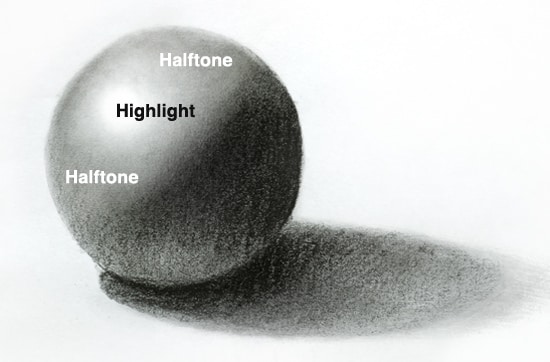
The Highlight is the very lightest office. It's where the calorie-free directly hits the object then is the best indicator when you lot look at your bailiwick to determine where and at what angle the light is coming from.
Highlights make the drawing come to life.
The Halftones blend into the shadow side and make the highlight appear white. They are always lighter in value than the lightest value on the shadow side.
The Shadow Side
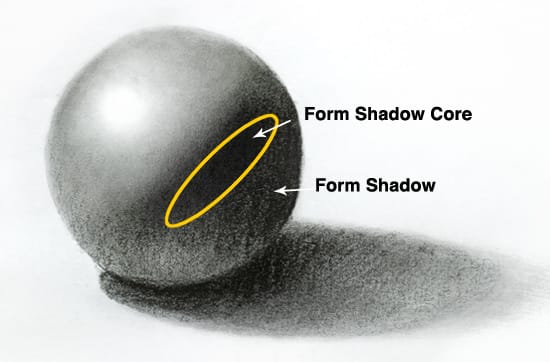
If a Cast Shadow is ever hard (albeit with blurry edges sometimes) a Grade Shadow is soft.
It is the dark side on an object not facing the lite that reveals the form and mass of the shape.
The very darkest point within the Class Shadow is called the Course Shadow Core.
Information technology falls nether the Shadow Line (or Terminator) on the dark side and is where there is no lite hit the surface.
It blends into the remainder of the Form Shadow which is lighter in value considering reflected or ambient light within the scene.
The Allure of Reflected Low-cal
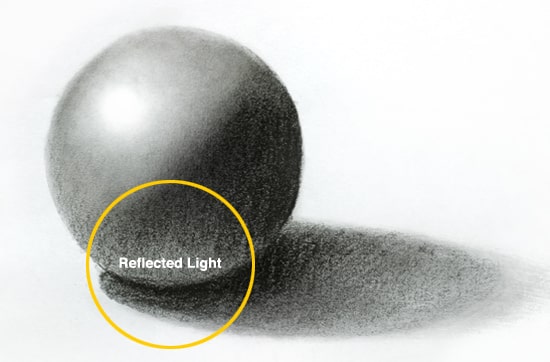
Reflected calorie-free is when the light is reflected onto an object, from the surface it sits on. White or shiny surfaces reflect the well-nigh light, nighttime or black surfaces reverberate the to the lowest degree amount of light.
The sphere in a higher place is sitting on a matte white piece of paper.
When you lot're showtime starting cartoon it is easy to become obsessed with reflective light, it seems sophisticated and then subtle.
More often than not, what happens is you 'expect into your darks' also much and over exaggerate how lite that area actually is.
You and so lose that initial simple lite concept we had showtime established when 'mapping out' from a light and shadow side.
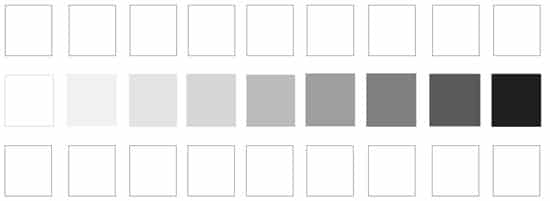
You can print out this guide and practice matching the tones with your pencils
When y'all're turning a course away from the calorie-free, using the tonal value strip above volition exist invaluable.
Because yous will be really tempted to try to use a lighter tone than you need, being able to bank check your values will enable you to keep the illusion of lite consistent.
When reflected low-cal is handled well, it can give your drawings that 'How did you do that?' response – then it's worth taking the time with.
Next week we're going to put these theories into do in my studio, where I'll set up and draw an apple.
When working on three dimensional drawings, the two things I focus on are form and edges. We'll besides create some quick sketches to map shadows and encompass cartoon techniques on turning a course.
Get the kettle on, your pencils out and equally you sketch, start to observe more than carefully the calorie-free fall and the shadows that are existence created and bring together me next week in the studio.
You Might Also Like:
1.A Beginners Guide to Light & Shadow : Office 2 – Applied Drawing Tutorial
Source: https://willkempartschool.com/a-beginners-guide-to-shadow-light-part-1-drawing/
0 Response to "how to draw 3d alphabet with shadow"
Postar um comentário